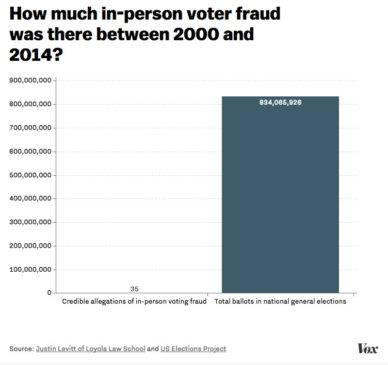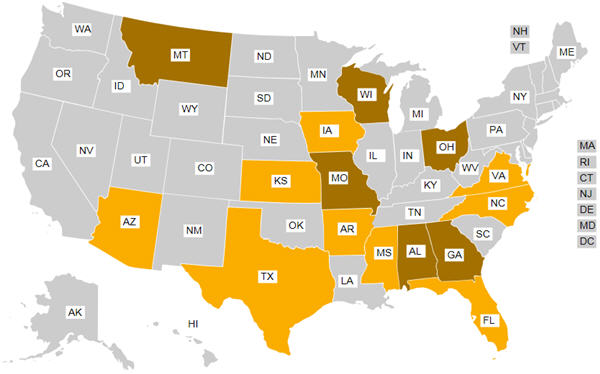Voter Suppression Legislation 2013-2014
 Between 2000 and 2010 in the U.S. there were 35 credible allegations of in-person voting fraud out of 834,065,926 ballots cast in national general elections. The 35 are 0.0000042% of the total cast. In addition to the 834 million ballots there were hundreds of millions more votes cast in primary, municipal, special, and other elections. Yet it’s been in-person voting fraud that nearly all legislation has targeted.
Between 2000 and 2010 in the U.S. there were 35 credible allegations of in-person voting fraud out of 834,065,926 ballots cast in national general elections. The 35 are 0.0000042% of the total cast. In addition to the 834 million ballots there were hundreds of millions more votes cast in primary, municipal, special, and other elections. Yet it’s been in-person voting fraud that nearly all legislation has targeted.
In contrast, between 2000 and 2010 there were 47,000 UFO sightings and 441 Americans were killed by lightning. For election fraud of any type between 2002 and 2005, federal convictions totaled eighteen for voting while ineligible, five were for voting multiple times, and three for registration fraud, according to the Justice Department under George W Bush.
Just since 2013, many states have passed measures that make it far harder for Americans to exercise their fundamental right to cast a ballot. These measures have targeted African-Americans, the elderly, students and people with disabilities. The voter suppression has included requiring a government-issued photo ID to vote, proof of citizenship to register to vote, cutting back on early voting days, particularly on weekends when it’s most convenient to vote, eliminating Election Day registration, new restrictions on voter registration drives and additional barriers to voting for people with criminal convictions.
Research shows that women, older and poorer voters, people without college degrees, residents of urban counties – and strong Democrats – are more likely to vote early.
Voting rights advocates have attacked these laws as blatant attempts to suppress the vote. Meanwhile, defenders justify the actions as protecting “voter integrity” and as ensuring “fairness” and “uniformity” in the system and claim there’s rampant voter fraud.
The New York Times reported in 2007 that a five-year investigation by the Bush administration “turned up virtually no evidence of any organized effort to skew federal elections.”
The Brennan Center for Justice at NYU School of Law conducted the most in-depth voter fraud study ever undertaken. They sorted through thousands of allegations going back to the 1990s. Their 2007 report, “The Truth About Voter Fraud” found that “only a tiny portion of the claimed illegality is substantiated – and most of the remainder is either nothing more than speculation or has been conclusively debunked.” They concluded “one is more likely to be struck by lightning than to commit voter fraud.”
The following map, provided by the American Civil Liberties Union (ACLU), charts which states passed voter suppression measures since January 1, 2013 and where the right to vote remains under siege as of Summer 2014.



All who serviced in service should be able to vote, and thier parents , I think all state should be able to vote or nobody ,not just white state no question ask, it almost like north vs south and it should be, if we want it done right! Ok